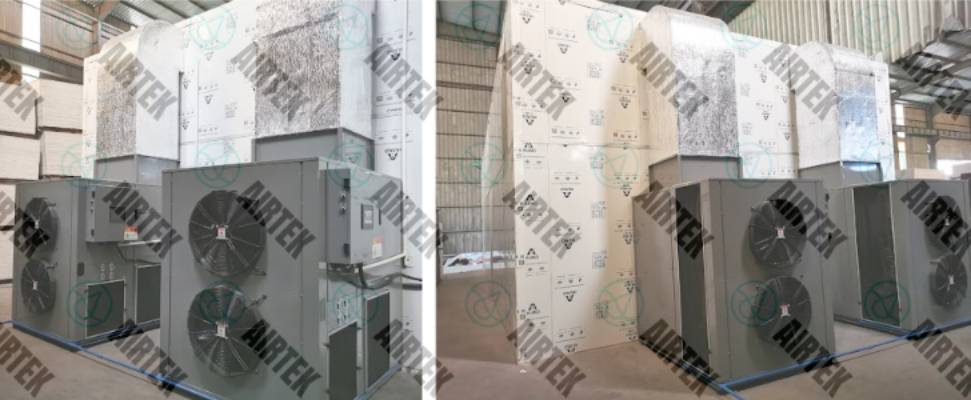The traditional tobacco curing barn has evolved significantly over centuries, transforming from simple wooden structures into sophisticated climate-controlled environments. Modern commercial tobacco producers recognise that consistent quality depends largely on precise moisture management throughout the curing process.
A tobacco curing barn equipped with advanced dehydration technology offers unparalleled control over humidity, temperature, and airflow—the three critical factors that determine the final product’s flavour profile, colour, and market value. This level of precision simply cannot be achieved through conventional methods that rely heavily on environmental conditions and manual adjustments.
Understanding Moisture Dynamics in Tobacco Processing
The relationship between moisture content and tobacco quality forms the cornerstone of successful commercial production. Freshly harvested tobacco leaves contain approximately 80-85% moisture—far too high for proper curing or storage.
During the curing process, this moisture percentage must be systematically reduced to between 12-16%, depending on the specific tobacco variety and intended market. This reduction cannot occur too quickly or too slowly, as either extreme leads to quality degradation that affects the end product’s taste, aroma, and combustion properties.
Monitoring the temperature of the leaf alongside relative humidity provides crucial data points for manufacturers seeking consistency across multiple batches. The ideal moisture gradient varies throughout different curing stages, requiring dynamic adjustments rather than static conditions.
The Limitations of Traditional Curing Methods
Conventional tobacco curing barns often struggle with inconsistent results due to their reliance on natural environmental factors. Weather fluctuations, seasonal changes, and geographical variables all introduce unpredictable elements into the curing equation.
These traditional structures typically lack adequate insulation and precise control mechanisms, leading to uneven drying patterns throughout the facility. Some portions of the harvest may dry perfectly while others remain too moist or become excessively dry, resulting in product inconsistency that commercial buyers simply cannot tolerate.
Manual monitoring and adjustments introduce human error into the process, with even experienced workers struggling to maintain optimal conditions around the clock. This variability directly impacts the bottom line through reduced quality ratings and potential rejection by discerning buyers.
Advanced Moisture Control Technologies in Modern Systems
Today’s industrial tobacco curing systems incorporate sophisticated moisture control technologies that revolutionise the consistency of the final product. Computerised systems continuously monitor ambient conditions and make micro-adjustments to maintain ideal parameters.
Heat pump technology has emerged as a particularly efficient solution, providing precise temperature regulation while consuming significantly less energy than conventional heating methods. These systems extract moisture from the air and recirculate it, creating a closed-loop environment that minimises external influences.
Infrared moisture sensors installed throughout modern curing facilities provide real-time data on leaf conditions, enabling automated systems to adjust airflow patterns, temperature gradients, and humidity levels with remarkable precision. This technology eliminates guesswork and creates unprecedented batch-to-batch consistency.
Achieving Flavour and Quality Consistency Through Precision Drying
The chemical transformations that occur during tobacco curing directly influence flavour compounds, nicotine content, and aromatic profiles. These changes happen most favourably within specific moisture ranges that vary throughout the curing timeline.
Commercial producers must achieve consistency across enormous quantities of tobacco, often processing hundreds of tonnes simultaneously. Without advanced moisture management systems, this scale of production would inevitably result in quality variations that damage brand reputation and market value.
The enzymatic reactions that develop desirable flavour compounds require precise moisture levels to progress optimally. Too dry, and these reactions halt prematurely; too moist, and unwanted microbiological activity may introduce off-flavours or even spoilage that renders entire batches unmarketable.
Economic Benefits of Controlled Moisture Management
Beyond quality improvements, advanced moisture control systems deliver substantial economic benefits to commercial tobacco operations. Energy consumption typically decreases by 30-45% compared to conventional curing methods, representing significant operational savings.
Reduced curing time translates directly to increased facility throughput, allowing producers to process more tobacco with the same physical infrastructure. Many operations report cycle time reductions of up to 40% after implementing controlled dehydration systems.
Insurance providers increasingly recognise the reduced risk of fire, spoilage, and product loss associated with modern moisture control systems, often resulting in lower premium costs for facilities utilising this technology. These combined savings strengthen competitive positioning in an increasingly challenging market.
Conclusion
The evolution of the tobacco curing barn from rudimentary shelter to sophisticated moisture management system represents a critical advancement for commercial tobacco production. As consumer and regulatory demands for product consistency continue to intensify, manufacturers who invest in precise moisture control technology gain significant advantages in quality, efficiency, and market position. The science of achieving optimal moisture levels has transformed from art to precision engineering, ensuring that every batch meets exacting standards for flavour, appearance, and smoking characteristics.

